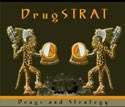Here are a few pictures taken during a 10-day field trip to the hugely beautiful Rif mountain range of northern Morocco in August 2005.
There is little doubt that these mountains are the largest hashish production area in the world at present. Hashish is manufactured from the pollen of Cannabis sativa, which is the plant that you can see on most of the pix. Cannabis sativa grows on several tens of thousand hectares in the Rif mountains. According to the surveys carried out by UNODC using satellite imagery, an estimated 120,500 hectares of Rif land was dedicated to growing cannabis in 2004 (10 percent less than the 134,000 hectares estimated in 2003) [UNODC, 2005, p. 5]. Practically, this means that if you go to the Rif at the right season, you will have a hard time not seeing cannabis fields (even if growers sometimes try to hide them from view, as some pix illustrate).
The Rifan cannabis-growing/hashish-manufacturing sector provides a livelihood to 96,000 families in the mountains, according to the UN (and God knows how many more elsewhere in Morocco and in Europe). This means that in the Rif alone, approximately 800,000 people depend on cannabis for a living.
In Morocco, cannabis is known as « kif », an Arabic word also meaning « perfect bliss ». Kif cultivation and hashish manufacturing are prohibited in the country, and so is smoking cannabis by-products such as hashish and « kif »[1]—at least in theory. In the Rif, kif cultivation and smoking officially only is “tolerated”. The basis for such “tolerance” is said to be history (read what the UNODC [2004] has to say about this here, in French only, sorry), but more research is needed since the historical evidence cited seems a bit flimsy and would require to be thoroughly checked, studied in greater detail, and perhaps revised.
Economics is a strong, perhaps stronger, additional explanation for the official toleration of large-scale kif cultivation in the North of Morocco. Indeed, in most European countries the smoking of hashish is as officially prohibited as hashish manufacturing is in Morocco, and as tolerated in practice. In good measure, the existence of a major consumer market across the Mediterranean explains the large-scale production of hash in Morocco.
Whatever the case, DrugSTRAT offers here a three-tiered promenade into the reality (and beauty) of the Rif mountains and what probably is their main human activity (kif growing).




